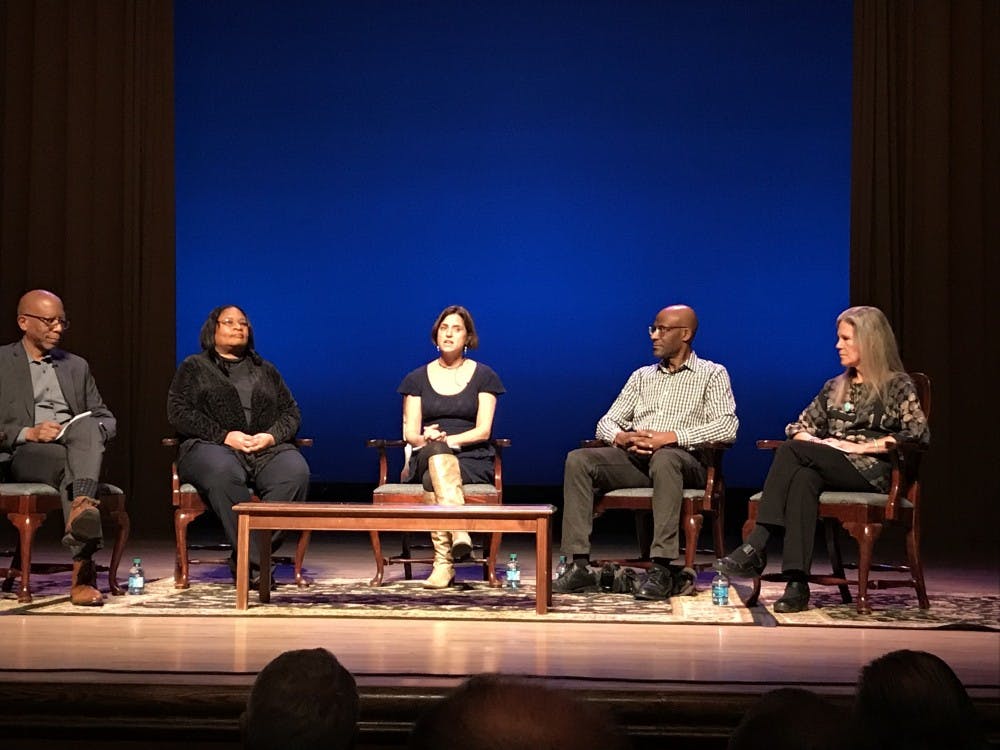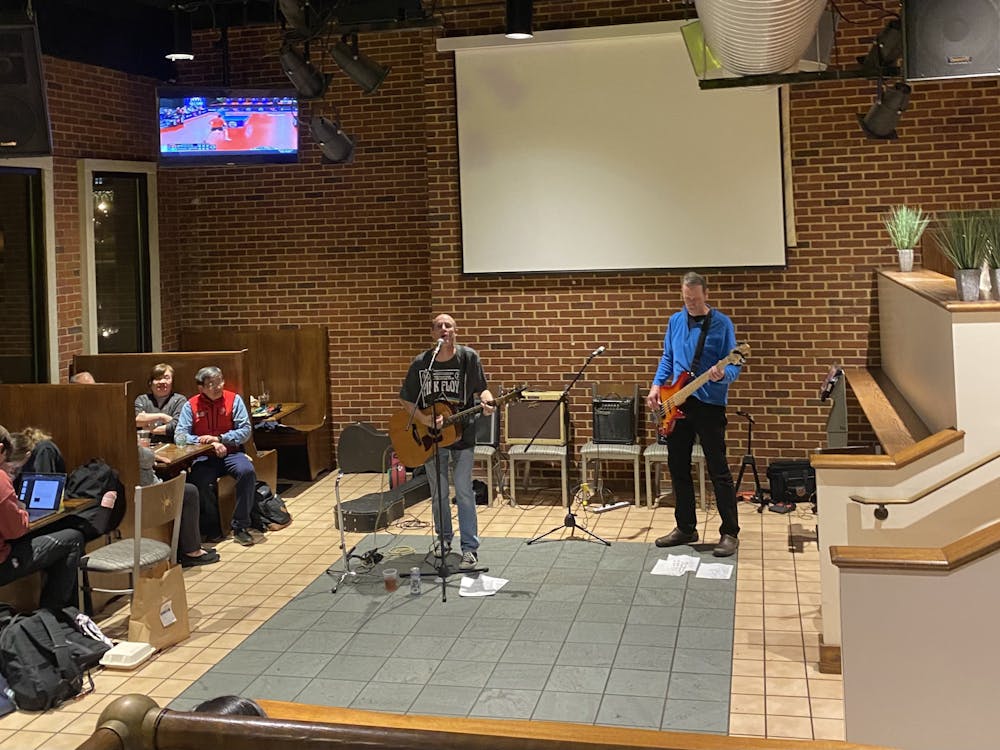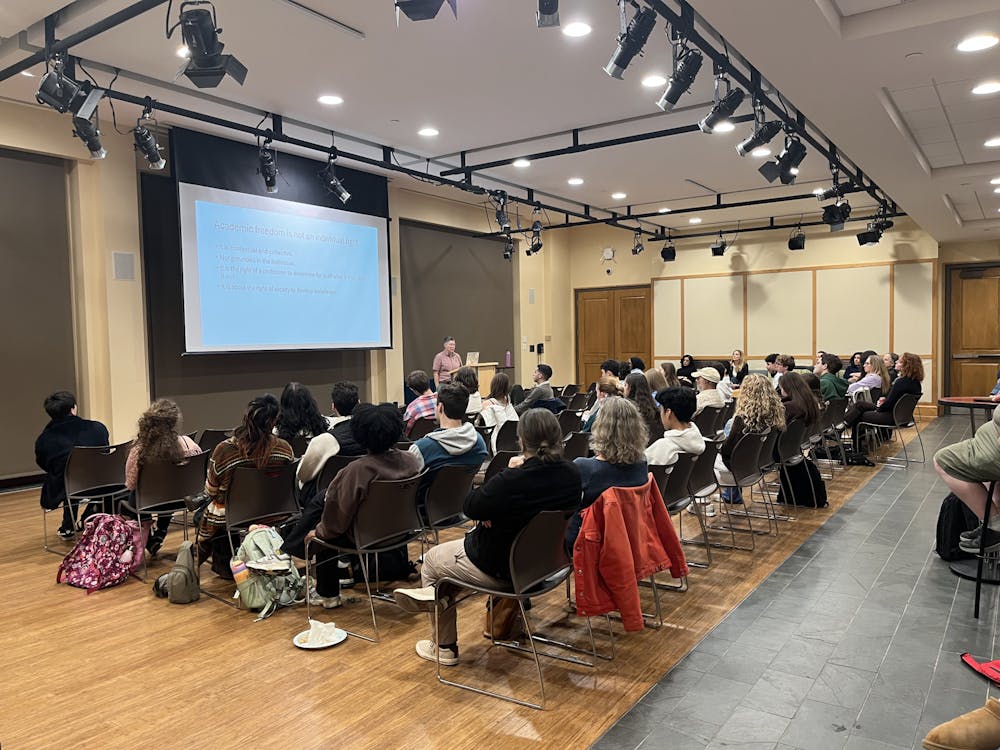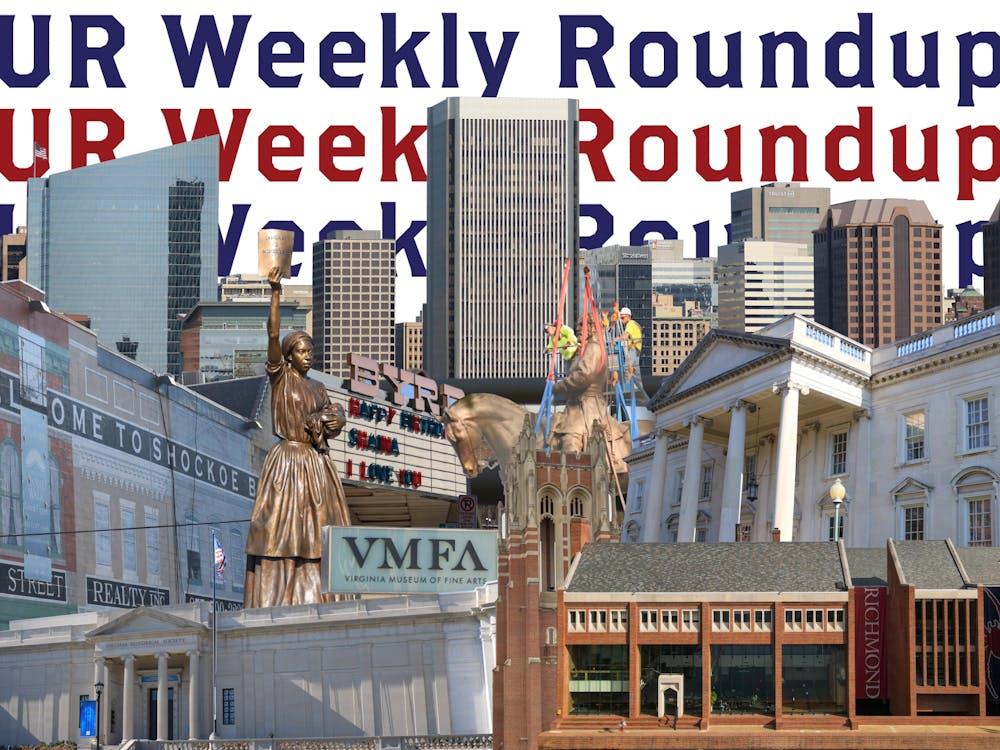They represented an array of ages. Most of them were older, but many middle- and college-aged attendees dotted the theater.
When the floor was opened to questions and comments, they revealed themselves to have vastly varying opinions on American race relations — one man went as far as to suggest that the government poisoned the water with chemicals to effeminize black men.
But the crowd that gathered in the Booker Hall of Music's Camp Concert Hall on Jan. 26 for a panel discussion was there to talk about a specific group of people: Richmonders grew up during the civil rights era and were profoundly affected by it.
The panel, organized by University Museums, was focused on race, resilience and a new exhibit.
It consisted of public historian and author Elvatrice Belsches, museum curator Ashley Kistler, Richmond-based professional photographer Brian Palmer and Richmond Times-Dispatch columnist Michael Paul Williams.
The panel was moderated by oral historian and professor of American Studies Laura Browder. Several of the people profiled in the exhibit also attended the discussion.
The exhibit discussed at the panel, “Growing Up in Civil Rights Richmond: A Community Remembers,” opened at the Harnett Museum of Art at the Modlin Center for the Arts on Jan. 17. It consists of portraits of Richmond natives who grew up during the civil rights era, paired with text about their memories from that tumultuous period in history and the effects they think that history has on the present.
The photographs were taken by Palmer and the text is based on interviews conducted by Browder.
Browder opened the panel by introducing and asking questions of her guests, all of whom are professionals with considerable knowledge about Richmond-area history.
Belsches spoke about research she has done into the city’s black community in the 19th century, whose cohesion and resilience in the face of adversity carried into the 20th-century subjects in the exhibit, she said.
Williams, who was also photographed for the exhibit, talked about how the exhibit can help fill in the gaps left by journalists during the civil rights movement.
“They say that we as journalists write the ‘first draft of history,’” Williams said. “It’s the ‘first draft’ because it’s usually very incomplete. Newspapers throughout the country — and the one I work for is no different — often dropped the ball when it came to writing that first draft where the civil rights movement was concerned. I thought that this is adding flesh and blood to heart to the skeletons of the stories that were told back in the day.”
Enjoy what you're reading?
Signup for our newsletter
Following the initial questions from Browder, the panel members responded to questions and comments from the audience. Some audience members took the opportunity to speak to their own vivid recollections of civil rights-era Richmond, while others pressed the panel on the relevance of the exhibit in today’s political environment.
Attendees were encouraged to take the short walk to the museum to explore the exhibit and partake in light refreshments provided by UR Museums.
Among the attendees was Daryl Dance, who taught English at the university from 1992 to 2012. This was the first time she had visited the exhibit, she said, but she has worked with Browder in the past and knows firsthand about what the subjects of the exhibit went through and witnessed in their youth.
“I was teaching at Armstrong High School when the schools began integration in Richmond,” Dance said. “So I taught some of the people [whose portraits and interviews the exhibit showcases], and I know others very well. It’s all very familiar to me.”
Dance said she was exceedingly proud of her former students and everyone in the exhibit for sharing their stories, and that she hoped to see similar oral history projects be produced in the future.
“We have to know our history to know ourselves, to anticipate our future and to understand our present,” Dance said. “It is something very important, and this is only the beginning.”
Browder expressed a similar sentiment toward the end of the panel, when she emphasized that the work begun by the exhibit is far from finished.
“This really is an ongoing conversation,” Browder said. “This exhibition represents the culmination of seven years’ work, yes, but we should continue to want to report these conversations and keep the dialogue going in a lot of different ways.”
Contact opinions editor Hunter Moyler at hunter.moyler@richmond.edu.
Support independent student media
You can make a tax-deductible donation by clicking the button below, which takes you to our secure PayPal account. The page is set up to receive contributions in whatever amount you designate. We look forward to using the money we raise to further our mission of providing honest and accurate information to students, faculty, staff, alumni and others in the general public.
Donate Now



